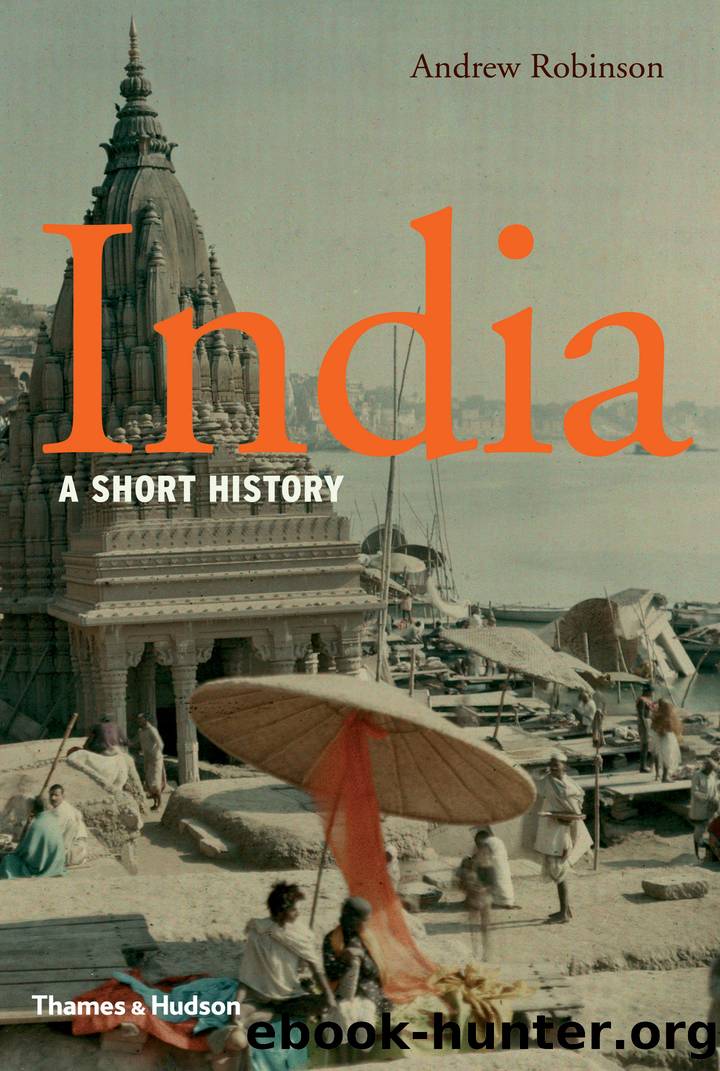India by Andrew Robinson

Author:Andrew Robinson
Language: eng
Format: epub
Publisher: Thames & Hudson
SEVEN
European Incursions and East India Companies
EUROPEAN INCURSIONS AND EAST INDIA COMPANIES
Long before the Jesuits visited Akbar at the Mughal court in the 1580s, Europeans had made their way to India. The earliest to arrive – discounting Alexander of Macedon and his Greeks, who stopped not far beyond the Indus – were ancient Greek and Roman sailors and merchants, about whom little is known. Their reports of the mysterious lands of the East contributed to Ptolemy’s map of the world in the 2nd century AD, and their yarns may have helped to spawn the fantastical tales of India in medieval European bestiaries.
The Indian elephant, for example, was said to have legs like pillars without knee joints, so that it could not get up if it fell over. Elephants therefore had to sleep standing up against trees; and so hunters were said to saw through trees half way in the hope that elephants would lean against these trees, fall down and become trapped.
Indubitably real, however, was the Greek and Roman maritime trade with India in spices and textiles in exchange for European gold. Roman coins excavated from peninsular India and Ceylon are so plentiful that the coins must have circulated at this period as Indian currency, although there is no evidence that European traders settled in the subcontinent. The first Europeans actually to live in India were Jews who settled on the Malabar coast. They probably arrived as early as the first century after the fall of Jerusalem in AD 70, given that a Roman merchant ship plying regularly between the Red Sea and Arabia, Malabar and Ceylon found a Jewish colony in Kodungallur (Cranganore) in the 2nd century. At any rate, a Jewish community was established in Kodungallur by the 5th century, at the latest, when it received a grant of land and other rights from a local Indian ruler, recorded on a copper plate in an early Tamil script, which still exists.
The European colonialists who took over control of northern India from the Mughals in the mid-18th century were therefore relative latecomers from the West. The British arrived in India only in the early 17th century after the founding of the East India Company in London, with a royal charter from Queen Elizabeth dated 31 December 1600 granting the ‘Governor and Company of Merchants of London trading into the East Indies’ a national monopoly of trade in the East. Other nation-based East India Companies, founded by the Dutch, the Danes, the Portuguese and the French, were chartered in 1602, 1616, 1628 and 1664, respectively. Of these, the serious rival to the British was the Dutch East India Company, officially called the Vereenigde Oostindische Compagnie (VOC), which was particularly successful in Ceylon and south India, and of course in the Dutch East Indies and South Africa. By 1669, at the zenith of its success, the VOC had more than 150 merchant ships, 40 warships, 50,000 employees and a private army of 10,000 soldiers, and was the richest private company the world had ever known, paying a dividend of 40 per cent on the shareholder’s original investment.
Download
This site does not store any files on its server. We only index and link to content provided by other sites. Please contact the content providers to delete copyright contents if any and email us, we'll remove relevant links or contents immediately.
| Africa | Americas |
| Arctic & Antarctica | Asia |
| Australia & Oceania | Europe |
| Middle East | Russia |
| United States | World |
| Ancient Civilizations | Military |
| Historical Study & Educational Resources |
The Daily Stoic by Holiday Ryan & Hanselman Stephen(2706)
The Fate of Rome: Climate, Disease, and the End of an Empire (The Princeton History of the Ancient World) by Kyle Harper(2434)
People of the Earth: An Introduction to World Prehistory by Dr. Brian Fagan & Nadia Durrani(2345)
Ancient Worlds by Michael Scott(2101)
Babylon's Ark by Lawrence Anthony(2068)
Foreign Devils on the Silk Road: The Search for the Lost Treasures of Central Asia by Peter Hopkirk(2054)
India's Ancient Past by R.S. Sharma(1984)
MOSES THE EGYPTIAN by Jan Assmann(1970)
The Complete Dead Sea Scrolls in English (7th Edition) (Penguin Classics) by Geza Vermes(1838)
Lost Technologies of Ancient Egypt by Christopher Dunn(1797)
The Daily Stoic by Ryan Holiday & Stephen Hanselman(1767)
The Earth Chronicles Handbook by Zecharia Sitchin(1743)
24 Hours in Ancient Rome by Philip Matyszak(1676)
Alexander the Great by Philip Freeman(1645)
Aztec by Gary Jennings(1543)
The Nine Waves of Creation by Carl Johan Calleman(1519)
Curse Tablets and Binding Spells from the Ancient World by Gager John G.;(1510)
Before Atlantis by Frank Joseph(1483)
Earthmare: The Lost Book of Wars by Cergat(1466)
